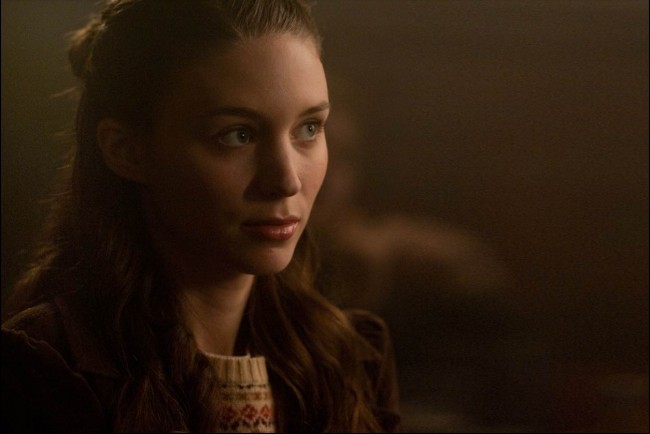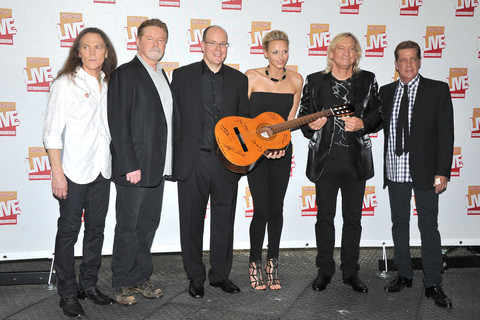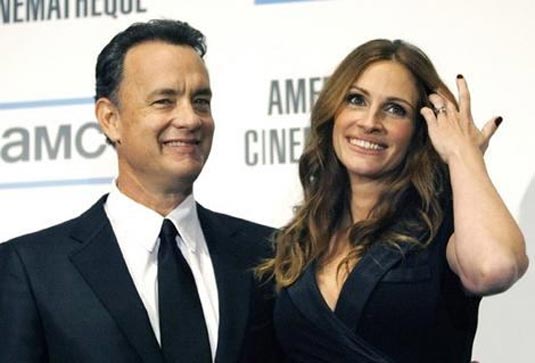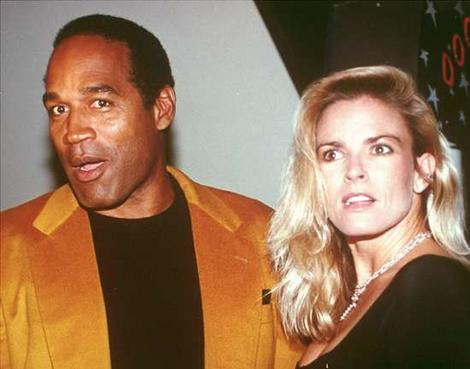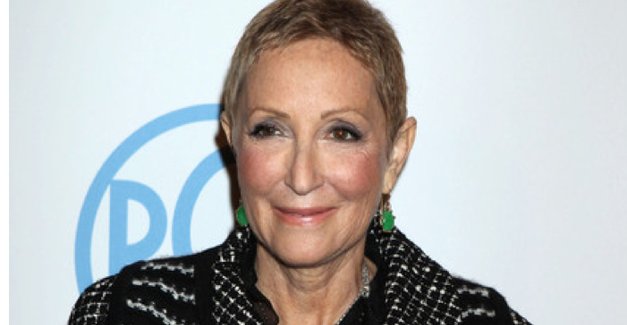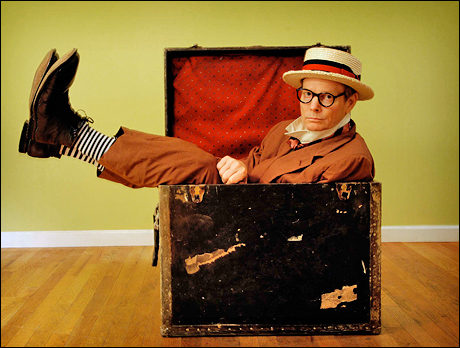Beyonce‘s “4” album debuts at Number 1 this week with around 300,000 copies sold. It’s a good but not great debut for “4” considering its predecessor sold 480,000 copies in 2008. The lower number is surely an indication of how the record biz has dwindled over the same period of time. It’s also about Beyonce not having a great single from this album. On the last one, “I Am…Sasha Fierce,” she had a breakout hit with “Single Ladies.” Even the video was parodied. “4” doesn’t have that single so far, although does have a few misses. I have to think that Beyonce’s forceful appearance on “Good Morning America” last Friday helped her a lot. She sang live, looked like a million bucks, and really went for it. All current performers should take notes. When Beyonce is on, she is worth her weight in gold bullion. It’s instructive to note that at same time Beyonce was roaring across the “GMA” set in Central Park, rapper Pitbull was featured on the “Today” show. He wasn’t very good, and his sales actuall went down. He’s dropped from number 7 to 15. This was a rare “Today” misstep. This Friday, country singer Blake Shelton comes to “Today,” which should be a hit. The following Friday is Chris Brown--yikes, what are they thinking? Meanwhile, Adele gets kicked to Number 2 this week; she’s still rolling deep in green. Lady Gaga drifts out of the top 10 and into oblivion.
Anthony Herrera, Great Soap Villain, Passes Away
I didn’t want to let the death of Anthony Herrera go unmentioned in the regular entertainment press. (Soap actors get little love even though they are a guilty pleasure.) The terrific actor, 67, was best known for playing the consummate elegant villain, James Stenbeck on “As the World Turns.” He was with the show from the early 80s on and off until the soap’s finale last September. Stenbeck terrorized the citizens of Oakdale but mostly his ex wife Barbara (Colleen Zenk) and their son Paul with delicious infamy. Nothing could kill James–not even when he was shot dead or dropped from a helicopter did he actually die. “As the World Turns” fans loved it when James would turn up suddenly and surprise his ex with a nasty “Hello, Barbara” that rivaled Anthony Hopkins’ Hannibal Lecter. Herrera had as many lives as James Stenbeck. He was diagnosed with Mantle Cell lymhoma in 1997. He was treated, went into remission, and the fatal cancer reoccurred. He underwent a stem cell transplant that saved him, and wound up testifying in front of Congress about his experience. There were a few really memorable soap villains who propelled the Procter & Gamble soaps–Larry Bryggmann and the late Michael Zaslow were the other very good ones–but Anthony Herrera was probably the best. The tragedy is, this time he won’t be coming back. Rest in peace.
Rooney Mara: The Girl with the 2 Year Old Movie That’s Finally Opening
Rooney Mara must have wondered what happened to “Tanner Hall.” I know I did. I saw this film, made by Tatiana von Furstenberg and Francesca Gregorini, at the 2009 Toronto Film Festival in a special screening. Since then, Mara has starred in “The Social Network” as Jesse Eisenberg‘s girlfriend (in that wonderfully written opening scene) and is set to appear as “The Girl with the Dragon Tattoo.”
Now, at long last, “Tanner Hall” has been set for release. The date is September 9th–two years after the Toronto screening. That screening was quite the event since Gregorini’s mother is Barbara Bach, the wife of Ringo Starr. George Harrison‘s wife, Olivia, even came in for that showing, along with Bach’s sister Marjorie who is married to Eagle guitarist Joe Walsh. Tatiana, of course, is the charming daughter of designer Diane von Furstenberg. Her husband, media mogul Barry Diller, also came to Toronto. This film was made so long ago that it played the Gen Art Film Festival in April 2010 and Rooney won the Stargazer Award.
Anchor Bay is doing the releasing; let’s hope they do a good job and don’t give up too soon. “Tanner Hall” has a lot of potential with young girls–it’s set in a girls’ school and is a little gem. September 9th seems like a month too late to release it, though, as kids will be focused on getting back to their ABC’s. But heck, at least it’s coming to theaters. I wonder if the young girls it’s targeted for will track down the racy European ad campaign for “Tattoo.” But we have to cut Rooney some slack–when “Tanner Hall” was first shown, her tattoos were still iron-on decals.
PS Tom Everett Scott has a nice turn in this film. And Imitation of Christ designer Tara Subkoff is featured as well!
Independence Day for Legendary Rock Stars
It doesn’t matter if you’re in the Rock and Roll Hall of Fame or the Songwriters Hall of Fame or if you’ve had two dozen worldwide hits that everyone on the globe can sing the words to. Rock, soul, country and pop stars whose careers were gigantic in the 60s, 70s, and 80s are being ignored by the large record labels. They are forced, instead, to issue albums themselves or on indie labels. And it’s not a bad thing.
There are few big label deals, no radio play and no promotion money for most of the stars who are considered rock legends. Sure there are a few exceptions like Paul McCartney, the Rolling Stones, and Elton John–who’s had a hit on Decca with Leon Russell. Now Russell will record for Decca as well. Sting has a long term relationship with Interscope. Paul Simon, and Carole King and James Taylor have all been on Concord. But Joni Mitchell and Carly Simon had trouble at Hear Music, now part of Concord.
But for the most part, it’s a picture of independence.
For example: Glen Campbell had gigantic hits like “Rhinestone Cowboy” and “Wichita Lineman.” But his new album will be issued on SurfDog Records next month.
Robbie Robertson led The Band, worked with Bob Dylan and is the voice of rock mainstay songs like “The Weight” and “The Night They Drove Old Dixie Down.” Did you know that he released an album earlier this year called “How to Become Clairvoyant”? It’s a wonderful bluesy collection and one track features Eric Clapton. Robertson simply issued it himself (www.robbie-robertson.com).
Other artists with self-made projects include the Queen of Soul, Aretha Franklin, with a CD that can be found at WalMart but not on a major label. “A Woman Falling out of Love” is Aretha at her best, too. New York rocker Garland Jeffreys, who recorded many albums for A&M in the 70s and 80s, has just put out “The King of In Between” at www.garlandjeffreys.com. It’s a knockout of a CD.
Who else? Barry Manilow has his first group of new songs in more than a decade on Stiletto Records. Julia Fordham‘s CDs–she made dozens for Virgin and for Vanguard–are at www.juliafordham.com. Same goes for Aimee Mann, the highly regarded leader of til Tuesday, whose music is included in tons of movies. She went out on her own with manager Michael Hausmann years ago.
Many big stars are going album by album, from Motown legends like Smokey Robinson and Gladys Knight to Joan Armatrading and Graham Parker.
And how does this all work out? Two of the great guys in the indie music biz, Daniel Glass and Steve Greenberg, have big hits right now–and they’re using new, young artists who didn’t make it on big labels. Glass’s GlassNote Records has had home runs with Secondhand Serenade and Mumford & Son. Greenberg’s S Curve Records has a monster hit with Andy Grammer‘s “Keep Your Head Up.” And next up is a new album from Joss Stone –S Curve also has 60s icon Tom Jones. It’s not unusual.
Prince Albert, Charlene Wittstock: Eagles Intervention in Photo
Life in the fast lane: Here’s the picture sent out officially from the Monaco royal wedding of The Eagles with Prince Albert and his now bride Charlene Wittstock. You’ll notice Don Henley and Glenn Frey, who cowrote most of the Eagles hits but now rarely speak to each other, flanking the royal couple. (I love the sideways look on Timothy B. Schmidt‘s face, he’s on the far left. Get me the f outta here.) Thank god for Prince Albert. He and his new wife have kept an international incident from occurring. Already they’re helping the world. And yes, the Eagles did play (or are playing) for the royal couple and their guests, but not for free, my dears. Legendary rock acts command $1 million and up for private gigs, and this would seem to be the top one of the season. All year long many of our favorite musicians are setting up in backyards (the ten to twenty acre kind) for billionaires, royals, and such, and collecting very, very good fees. It’s a refreshing change from doing arenas where the green room is concrete and the food is, too. How many other acts don’t speak to each other, but communicate through assistants, roadies, and the like? More than you can imagine.
Our old pal Dana Kennedy has a complete report about the wedding itself today at www.people.com.
Tom Hanks, Julia Roberts Actually Do Better With “Larry Crowne” Than Last One
“Larry Crowne” is not a great film and it’s not exactly creating a stampede to the box office. On Friday night, Tom Hanks and Julia Roberts only mustered $4 mil at the box office. They’ll be lucky to have $16 mil in the till by Monday night. But it’s not all that bad. For one thing, “Larry Crowne” did better last night than the last Hanks-Roberts combo. “Charlie Wilson’s War” opened to less than $3 million in 2007 on its opening night. It went on to earn $66 million–which I am sure everyone at Universal, and Tom and Gary Goetzman at PlayTone would be thrilled with if it happened.
“Larry Crowne” cost $30 million to make (it looks it) plus probably $10 million for prints, ads, and promotion. It’s not like they took over Times Square or Red Square for opening nights. In the end it will break even. Hanks and Roberts didn’t take their usual paychecks for this, it’s a low budget film. Good reviews would have helped, but there aren’t many. Still, if adults want to see a film this weekend or this month, aside from “Midnight in Paris,” this slow moving comedy is their best bet. (Unless, of course, you can find “Beginners” in your town.)
Tom Hanks will be back later this year with Sandra Bullock in Stephen Daldry‘s “Extremely Loud and Incredibly Close”– which will be a very strong Oscar contender from Scott Rudin with Warner Bros. and Paramount. So we won’t worry about him. Julia Roberts won’t be seen again until 2012 in brilliant casting as the Evil Queen in “Snow White.” But Roberts has other things to worry about. Two movies she’s produced still have no distributor. “Jesus Henry Christ” is recent. “Fireflies in the Garden” has never appeared in the U.S. Hanks, however, is a superstar producer, especially for HBO, from “Band of Brothers” and “The Pacific” to the upcoming “Game Change.”
Nicole Brown Simpson Charity 15 Years Later: $66 Remains
Fifteen years after it was started, the Nicole Brown Simpson Charitable Foundation is pretty much out of business. According to federal tax filings, the foundation–set up by Nicole’s sister Denise to educate and help abused women–claims $66 in assets. In its 2010 return, the Foundation says it finished the year $2,824 in the red, with nearly $5,000 in expenses. No money was spent on battered or abused women. Whatever was left went to travel, phone, miscellaneous expenses and $2,000 to an unnamed consultant–in the past that was always Denise Brown, sister of the woman O.J. Simpson killed (according to a civil jury) along with her friend Ron Goldman on June 12, 1994. There’s still a website for the Nicole Brown Foundation, but its last events listed took place in March 2010. O.J. Simpson, meanwhile, remains in prison for armed robbery and kidnapping.
“Spider Man” Producer Laura Ziskin Gets Two More Honors
Not everyone in Hollywood is falling on sidewalks, drunk, in the middle of the night. A lot of charity work is being done by stars:
Before the week ends and the holiday begins, I wanted to note two more tributes to our pal, Laura Ziskin, besides her own memorial service. Laura was honored at a recent Women in Film Lucy + Crystal Awards in Beverly Hills, along with Annette Bening, Katie Holmes and (posthumously) Elizabeth Taylor. In a clip that was shown, Laura– who loved movies–said “Who wouldn’t want to be in the movie business? Why would you want to do anything else?”
Meanwhile, Naomi Wilding, Liz Taylor’s granddaughter, told our Leah Sydney: “I feel sad that I’m here instead of my grandmother. I’m only doing this because she’s not here to receive it herself. As always, I have always been extremely proud of her humanitarian work, therefore I’m extremely proud to stand in for her. It’s not been that long so it’s difficult. Yet as I do it from the fullness of my heart. Because I loved her, I love everything she did and I believe in her with every inch of myself.”
Ziskin was also honored at the Prevention 2nd Annual Honors-for her work on behalf of Stand Up 2 Cancer. Also honored was Nancy Davis, who’s worked tirelessly raising money for MS research; she herself has been afflicted with the disease for several years. Bravo Nancy. But it’s no surprise: Nancy’s mom is the elegant and intrepid Barbara Davis, who produces the sensational Carousel of Hope in Los Angeles.
Meantime, Kristin Chenoweth, who recently co-hosted “Regis and Kelly,” told Leah she has a new album coming out on September 13th called “Some Lessons Learned” that’s a collaboration with Diane Warren. She’s also coming back to Broadway for a revival of “On The Twentieth Century.” Kristin laughed: “If Broadway will have me back, I’m coming back!”
Bill Irwin Makes It into A Shakespeare Play About…DSK?
Not many modern stars find their names in a Shakespeare play. It’s usually Henry the fourth and Richard the third. But last night Broadway and film star Bill Irwin got a surprise when he heard not only his name but a shout out during the opening night performance of “Measure for Measure” at the Delacorte Theater in Central Park. During a monologue in the second act of this terrific production, actor Carson Elrod–playing the clown, Pompey–strolled through the audience tossing out names of people he supposedly recognized. When he spotted Irwin–famous for his work in “Fool Moon” and dramatic work in “Who’s Afraid of Virginia Woolf”– Elrod exclaimed, “Bill Irwin! The world’s greatest living clown!” Irwin was shocked since he doesn’t know Elrod.
“Measure for Measure” only plays for the month of July. It also features brilliant work by John Cullum (“Northern Exposure”), Reg Rogers (“The Royal Family”), Lorenzo Pisano, Dakin Matthews, and Danai Gurira, as well as two fine actresses who cut their teeth on soaps–are you listening, networks?–Tonya Pinkins (“All My Children”) and Annie Parrisse (“As the World Turns”)…”Measure for Measure,” by the way, is pretty modern for a play written in 1604. It’s all about sex–lots of non-marital relations occur–and the main antagonist, Angelo (beautifully done by Michael Hayden)– is sort of a Shakespearean version of our currently accused Dominique Strauss Kahn…
“Transformers” A Disappointment But Some Record Is Broken
The new “Transformers” didn’t do well on Wednesday. It’s the sixth biggest opening day in history. But it made $37 million, far behind its predecessors on their respective opening days. Still I see that all the trade papers took the bait and pronounced it “the biggest opening day of 2011.” Uh, that’s not saying much. It was also the biggest opening day for a film based on a toy this year. And the biggest opening day for a film featuring Frances McDormand and John Turturro. The whole “broken record” thing has become something of a joke at this point. I will say this, however: last night at the AMC Lincoln Square, there were lines of fan boys and girls waiting to see “Transformers.” The lines snaked up and down the stairs. And fanboys are from all walks of life. Standing next to each were a black kid with sunglasses and headphones, and an Orthodox Jewish kid with tzitzit hanging out of his shirt. Maybe “Transformers” is the movie that brings the world together. POW! But it’s just junk food, and not so good at that. Paramount spent a fortune opening it in Russia, and then taking over Times Square. And Shia LaBeouf got the last laugh on everyone. He got Biggest Opening Day for a Young Buck Movie Star Who Kisses and Tells. Ka-ching!
Anyway, this too shall pass. Paramount has just released a new trailer for “Mission Impossible 4: Ghost Protocol.” As with number 3, it does look like J.J. Abrams has a winner on his hands. http://www.youtube.com/watch?v=V0LQnQSrC-g. I love how Tom Wilkinson keeps a straight face. “Your mission, if you choose to accept it.” Indeed.

